In Louisiana, a rich tapestry of habitats hosts a diverse assembly of owl species, each with its unique characteristics and ecological roles.
Delving into the avian realm, we discover nine captivating types of owls that grace this vibrant state’s bayous, forests, and open spaces.
Louisiana’s owl population paints a fascinating portrait of biodiversity from the iconic Great Horned Owl with its distinctive “horns” to the elusive and petite Northern Saw-whet Owl.
This exploration will unveil the varied lifestyles, habitats, and contributions of these nocturnal hunters, shedding light on the importance of conservation efforts to ensure the continued enchantment of Louisiana’s owl-filled landscapes.
Join us on a journey through the mystique of these feathered inhabitants, each contributing to the intricate ecological balance of the Pelican State. So, stay focused till the end.
9 Owls in Louisiana
Louisiana is home to a diverse array of owls, each with its unique characteristics and adaptations. From the iconic Great Horned Owl to the elusive Flammulated Owl, these birds play vital roles in maintaining ecological balance.
Explore the fascinating world of Louisiana’s owls, discovering their habits, habitats, and contributions to the state’s rich biodiversity.
1. Great Horned Owl
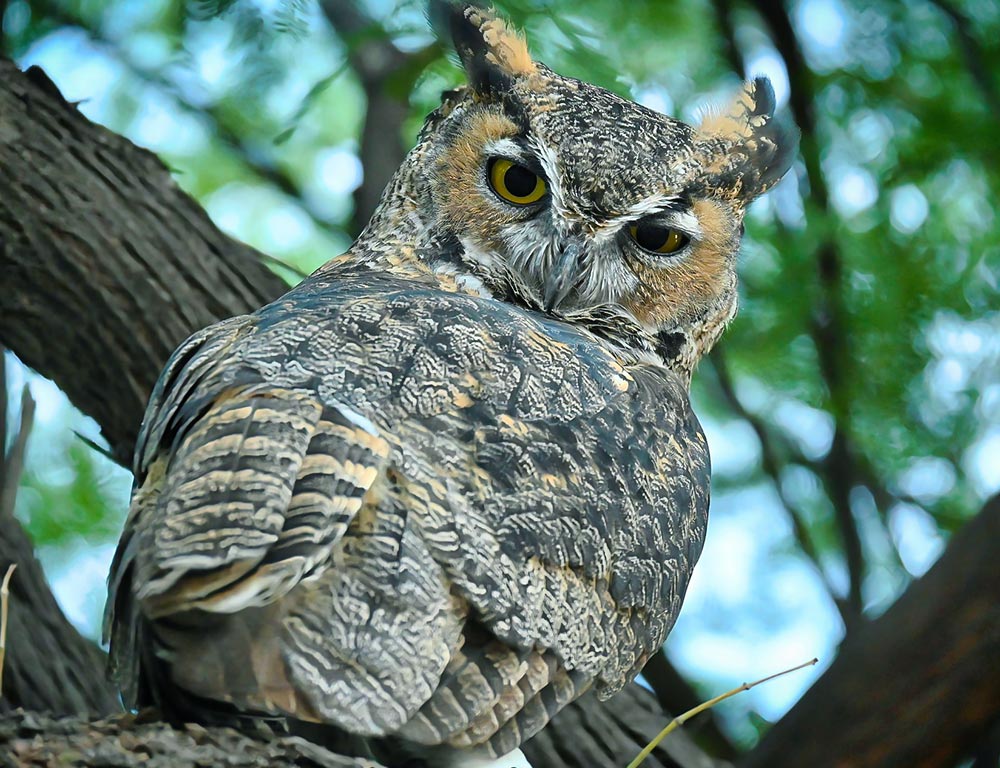
- Scientific Name: Bubo virginianus
- Population: Stable; common throughout Louisiana
- Life Span: Up to 20 years in the wild
- Size: 18-25 inches in length
- Weight: 2-5.5 pounds
- Food: Carnivorous; diet includes mammals, birds, and sometimes reptiles
- Wingspan: 3.3 to 4.8 feet
- Status: Least Concern
The Great Horned Owl is a formidable bird of prey found in various habitats in Louisiana, from forests to urban areas.
Known for their distinctive “horns” (tufts of feathers on their head), they are adaptable hunters, preying on various animals.
Their powerful talons and keen eyesight make them effective nocturnal predators. They have a diverse diet, hunting creatures like rabbits, rodents, and even other birds.
Great Horned Owls are skilled nest builders, often utilizing abandoned nests of other large birds. They are also known for their haunting hooting calls during the breeding season.
These owls are highly territorial; a mated pair may stay together for life. With their ability to thrive in various environments, Great Horned Owls are vital in controlling local rodent populations.
2. Barn Owl
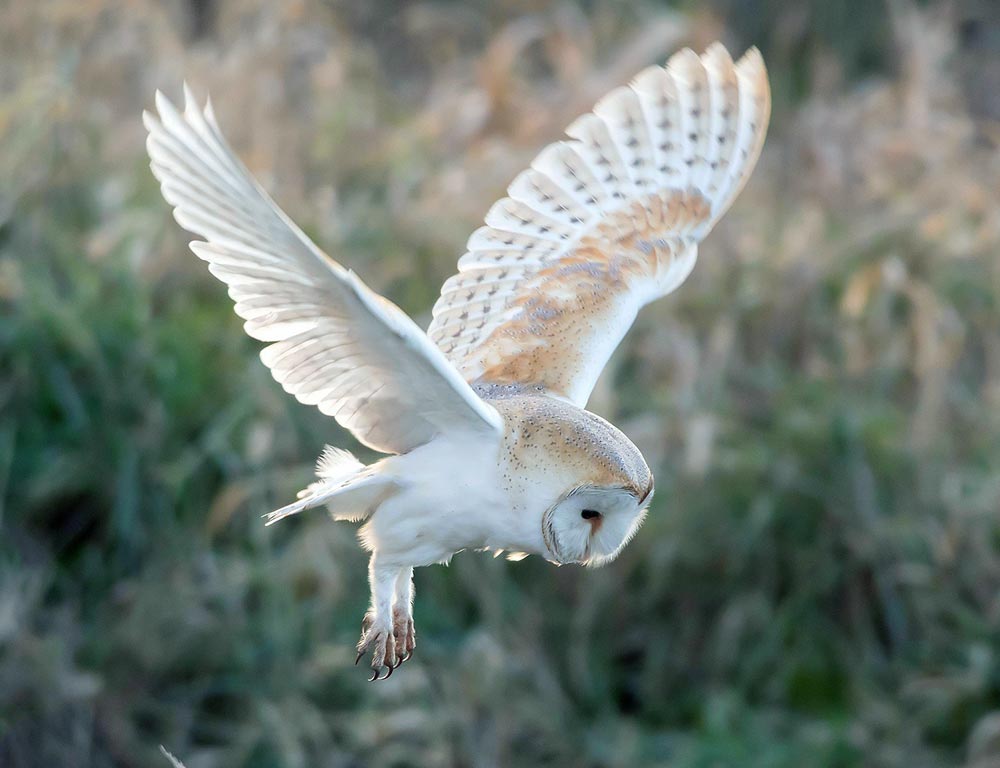
- Scientific Name: Tyto alba
- Population: Common, found throughout Louisiana
- Life Span: 2-5 years in the wild
- Size: 12-16 inches in length
- Weight: 12-25 ounces
- Food: Mainly small mammals, especially rodents
- Wingspan: 3.3 to 3.8 feet
- Status: Least Concern
Barn Owls in Louisiana prefer open habitats like farmlands, marshes, and grasslands.
They are recognizable by their heart-shaped facial disc and eerie screeching calls. Barn Owls are efficient hunters, relying on their exceptional hearing to locate prey in low-light conditions.
Their diet primarily consists of small mammals, making them valuable allies for farmers in controlling rodent populations. Barn Owls are cavity nesters, utilizing structures like barns, silos, and tree hollows.
Their breeding pairs are often monogamous and may produce multiple broods in a year. These owls play a crucial role in natural pest control and are considered beneficial for agriculture.
3. Barred Owl
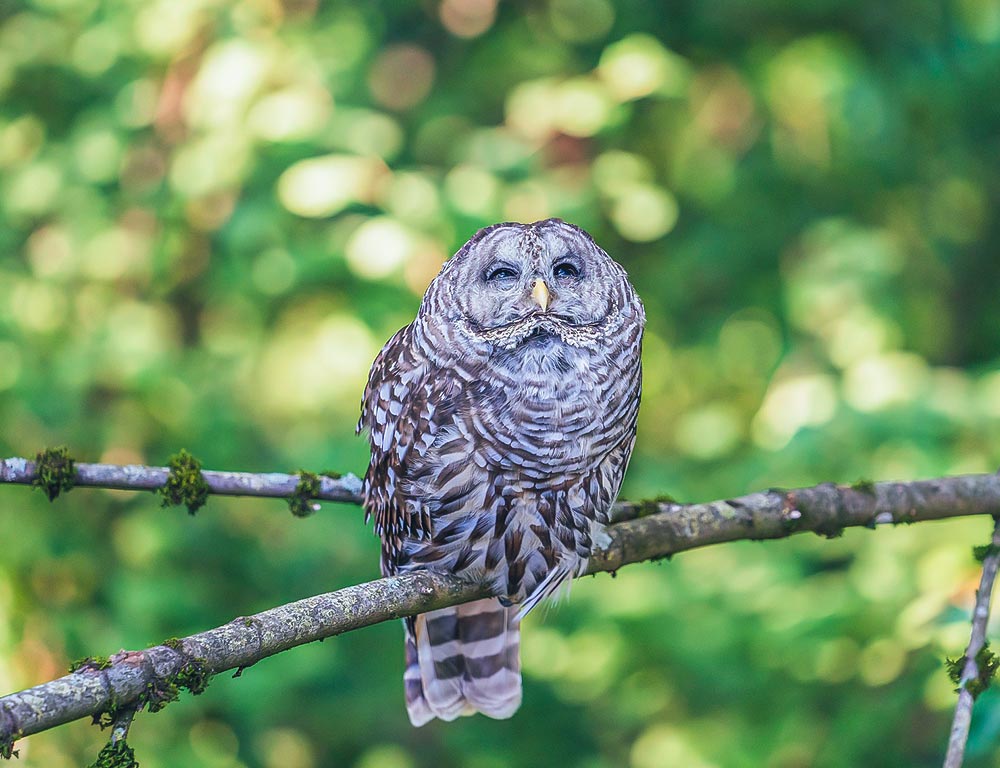
- Scientific Name: Strix varia
- Population: Common in suitable habitats in Louisiana
- Life Span: 10 years in the wild
- Size: 16-25 inches in length
- Weight: 1-2.3 pounds
- Food: Small mammals, birds, amphibians, and invertebrates
- Wingspan: 3.3 to 4 feet
- Status: Least Concern
Barred Owls inhabit dense forests, swamps, and wooded areas in Louisiana. Recognizable by their striking barred plumage and distinctive hooting calls, they are adaptable predators.
Their diet includes a variety of prey, such as mice, squirrels, and even small birds. Barred Owls are known for their ability to hunt in low light conditions, giving them an advantage over some other species.
These owls are cavity nesters, utilizing tree hollows for nesting sites. They are territorial, and their territories can range from 1 to 10 square miles.
Barred Owls are well adapted to their wooded environments and are often heard but not easily seen due to their nocturnal habits. Their role in controlling small mammal populations contributes to the overall health of forest ecosystems.
4. Eastern Screech Owl
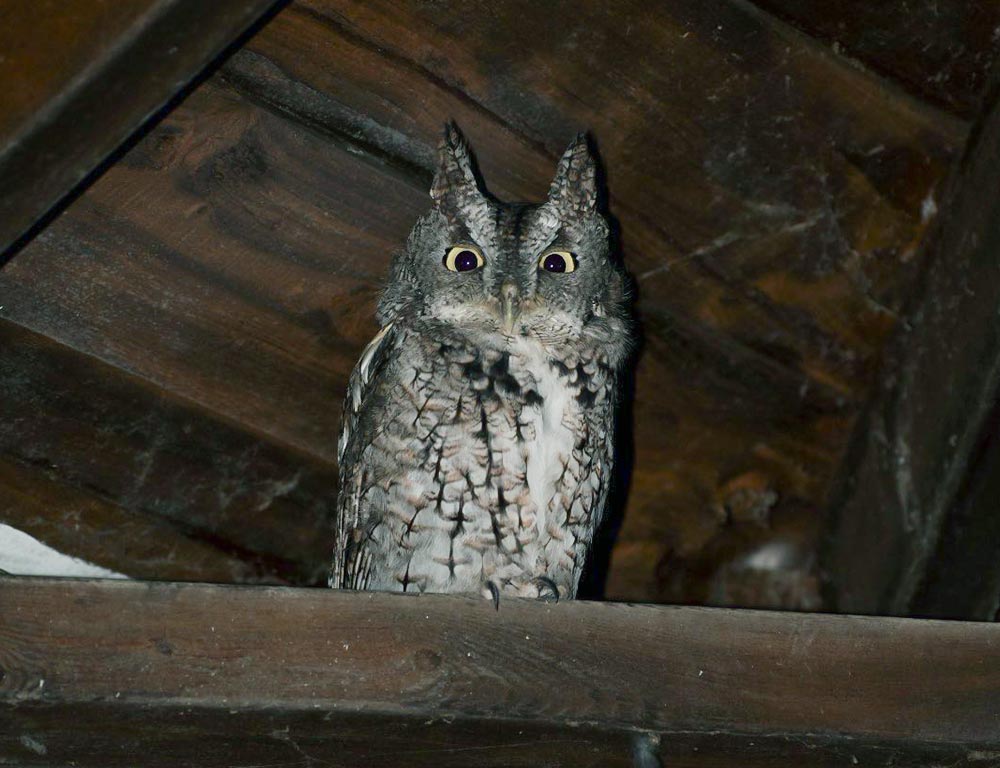
- Scientific Name: Megascops asio
- Population: Common in suitable habitats in Louisiana
- Life Span: 9-10 years in the wild
- Size: 6.3-9.8 inches in length
- Weight: 4-8 ounces
- Food: Mainly insects, small mammals, and birds
- Wingspan: 18-24 inches
- Status: Least Concern
The Eastern Screech Owl is a small, adaptable owl found in various habitats, including forests, parks, and urban areas in Louisiana.
Despite its name, it doesn’t always produce a screeching sound; instead, it may have a trill or whinny-like call.
These owls are masters of camouflage, with plumage that can range from red to gray, allowing them to blend seamlessly into their surroundings.
Eastern Screech Owls are cavity nesters, utilizing tree hollows or nest boxes. They primarily feed on insects but also prey on small mammals and birds.
Their nocturnal hunting style and excellent hearing make them effective predators. Despite their small size, Eastern Screech Owls are crucial in controlling insect and rodent populations.
5. Burrowing Owl
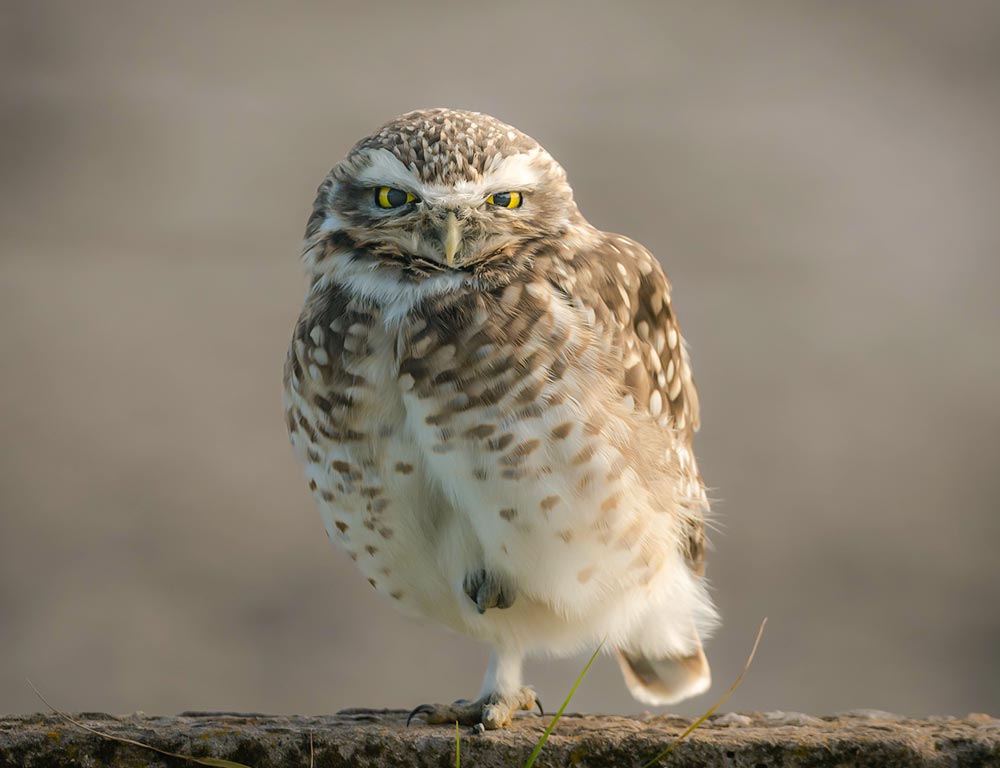
- Scientific Name: Athene cunicularia
- Population: Declining in some areas, variable in Louisiana
- Life Span: 6-8 years in the wild
- Size: 7.5-10 inches in length
- Weight: 5-8 ounces
- Food: Insects, small mammals, and occasionally birds
- Wingspan: 21-24 inches
- Status: Varies; some populations are of conservation concern
Burrowing Owls in Louisiana are found in grasslands, agricultural areas, and open landscapes. Unlike many owls, Burrowing Owls are active during the day, making them more visible to observers.
They are named for their habit of nesting in burrows, often created by other animals like ground squirrels. These owls are adept at catching insects in flight and prey on small mammals and birds.
In some regions, habitat loss and destruction of nesting sites have led to declining populations. Conservation efforts are crucial to protect these unique owls, contributing to the balance of local ecosystems.
6. Long-eared Owl
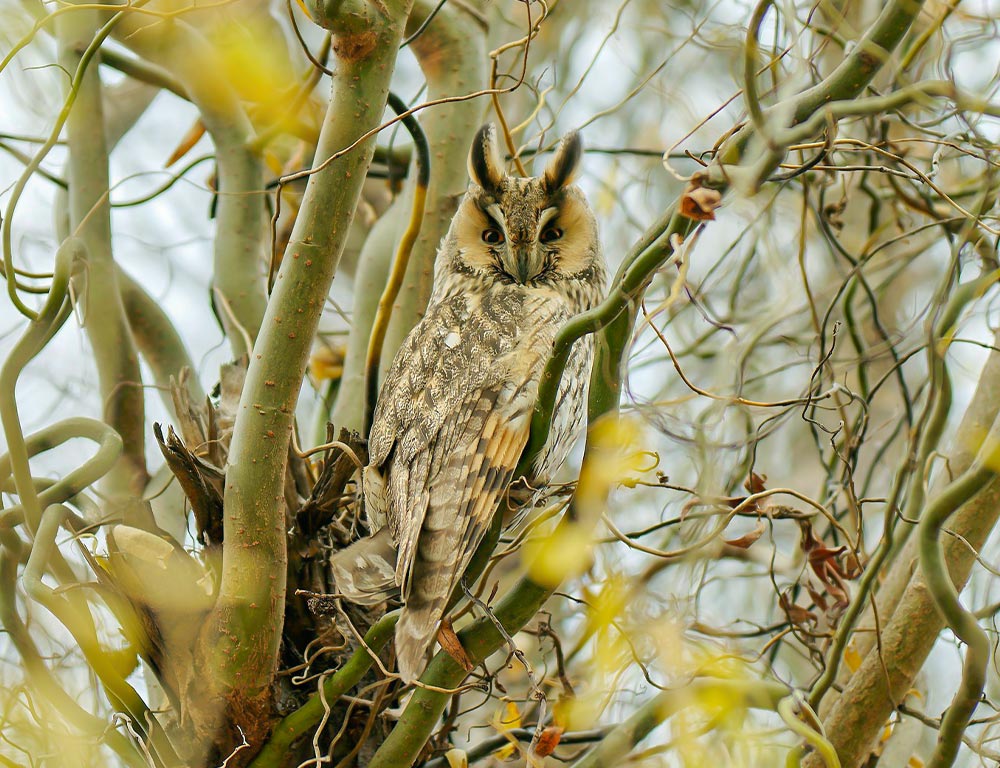
- Scientific Name: Asio otus
- Population: Variable, with declines in some regions
- Life Span: Up to 10 years in the wild
- Size: 13-16 inches in length
- Weight: 7-16 ounces
- Food: Mainly small mammals, occasionally birds
- Wingspan: 35-39 inches
- Status: Varies; some populations are of conservation concern
Long-eared Owls are forest-dwelling birds found in Louisiana, often in dense coniferous or deciduous woodlands.
They are named for their distinctive long ear tufts, not actual ears but feather extensions. Long-eared Owls are known for their cryptic plumage, providing excellent camouflage among tree branches.
These owls are primarily nocturnal hunters, preying on small mammals like voles and mice. Long-eared Owls are highly secretive and tend to roost in dense vegetation during the day.
Conservation efforts are crucial for protecting their habitats, as these owls are susceptible to disturbances and habitat loss. Maintaining healthy forest ecosystems is vital for the long-term survival of Long-eared Owls in Louisiana.
7. Short-eared Owl
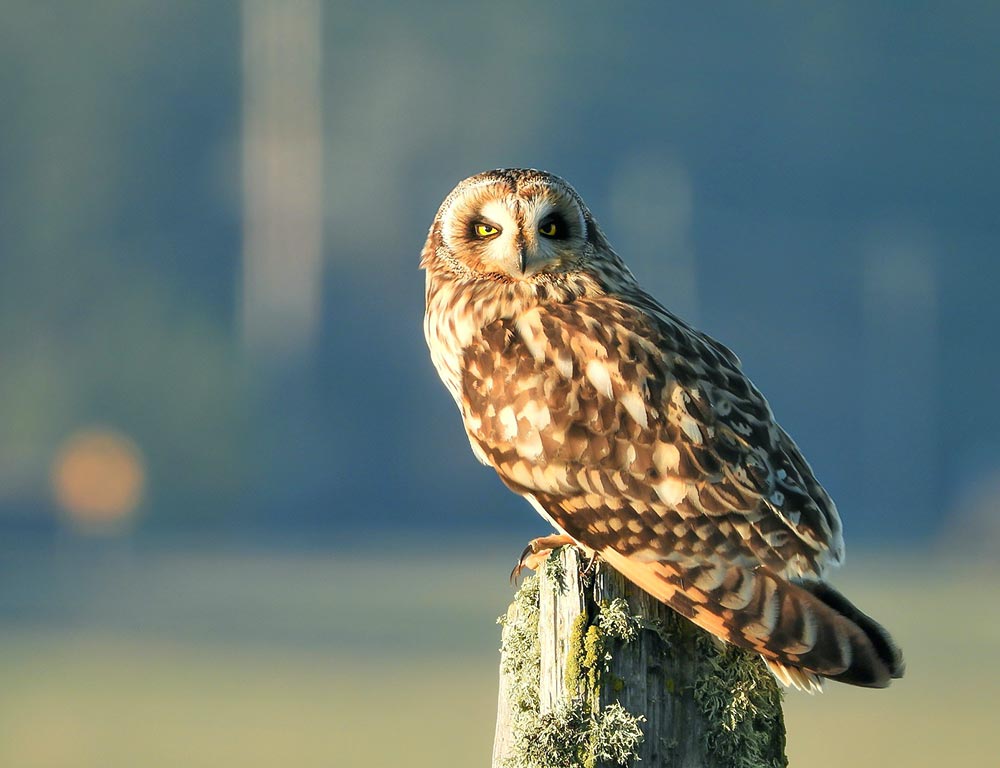
- Scientific Name: Asio flammeus
- Population: Varies, with fluctuations based on prey availability
- Life Span: 3-5 years in the wild
- Size: 13-17 inches in length
- Weight: 7-17 ounces
- Food: Small mammals, birds, and occasionally insects
- Wingspan: 33-43 inches
- Status: Least Concern
Short-eared Owls are known for their distinctive facial disks and short ear tufts. They inhabit open areas such as grasslands, marshes, and meadows in Louisiana.
Unlike many other owls, Short-eared Owls are crepuscular, meaning they are most active during dawn and dusk.
These owls are versatile hunters, preying on small mammals like voles and mice, as well as birds and occasionally insects. They are skilled fliers, with a buoyant, moth-like flight pattern.
Short-eared Owls are ground nesters, using scrapes on the ground for nesting sites. They face threats from habitat loss and changes in land use, making habitat conservation crucial for their survival.
8. Northern Saw-whet Owl
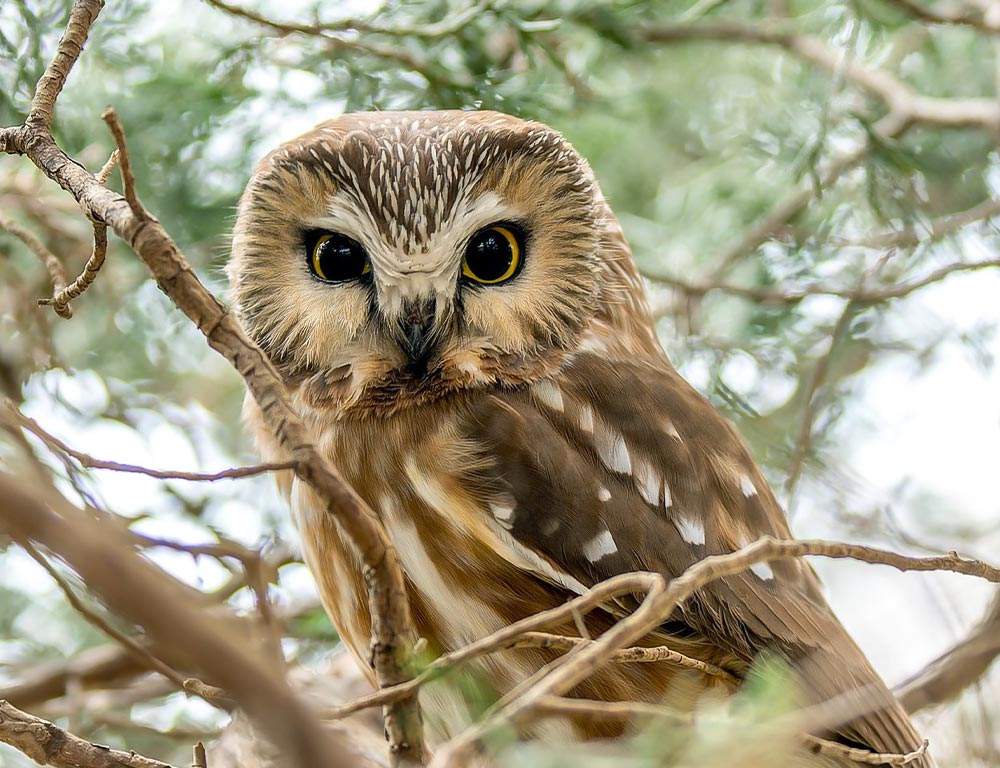
- Scientific Name: Aegolius acadicus
- Population: Widespread, but local populations may be vulnerable
- Life Span: 3-5 years in the wild
- Size: 7-8 inches in length
- Weight: 2-5 ounces
- Food: Mainly small mammals, insects, and occasionally birds
- Wingspan: 16-18 inches
- Status: Least Concern
The Northern Saw-whet Owl is a small, secretive owl found in various forested habitats in Louisiana. Despite their widespread distribution, these owls are often difficult to observe due to their nocturnal habits and well-camouflaged plumage.
Named for their repetitive, sawing-like call, Northern Saw-whet Owls primarily feed on small mammals, insects, and occasionally birds. They are cavity nesters, using abandoned woodpecker holes or natural tree hollows.
Their populations can be vulnerable to habitat fragmentation and climate change, making conservation efforts important for maintaining their habitats.
9. Flammulated Owl
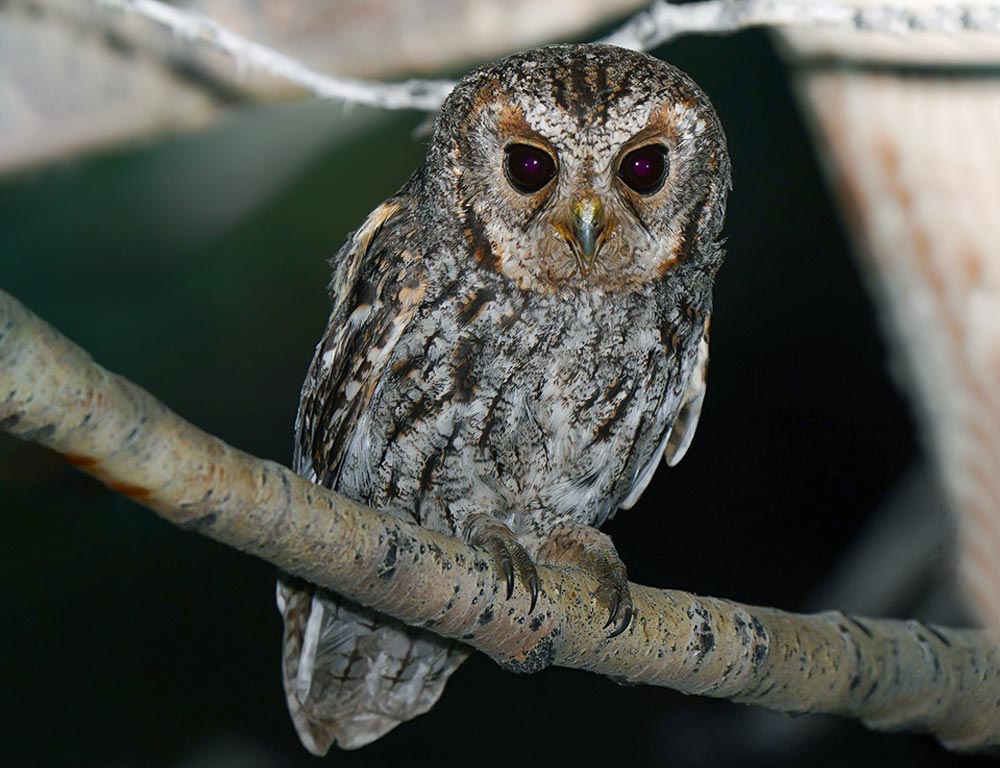
- Scientific Name: Psiloscops flammeolus
- Population: Stable, but localized and not well-studied
- Life Span: 4-7 years in the wild
- Size: 6.5-7.5 inches in length
- Weight: 2-3 ounces
- Food: Primarily insects, especially moths
- Wingspan: 16-18 inches
- Status: Least Concern
Flammulated Owls are small owls with a mottled appearance, found in pine and mixed-conifer forests in Louisiana.
They are primarily insectivorous, with moths being a significant part of their diet. Their diet and nesting habits are closely tied to the presence of large insect populations.
These owls are cavity nesters, often using old woodpecker holes for nesting sites. Due to their small size and nocturnal habits, Flammulated Owls are not frequently encountered.
While their populations appear stable, further research is needed to understand their ecology and potential threats. Conservation efforts should focus on preserving their forest habitats and maintaining healthy insect populations.
Steps to Preserve Owls in Louisiana
Preserving the delicate balance of Louisiana’s owl populations is crucial for maintaining healthy ecosystems. These enigmatic birds contribute to pest control and overall biodiversity.
Here are some of the essential steps to ensure the conservation and well-being of owls in Louisiana.
Habitat Protection
Safeguarding diverse habitats, from forests to grasslands, ensures owls have suitable places for nesting, roosting, and hunting.
Mitigating Habitat Fragmentation
Addressing the impacts of urbanization and development helps maintain interconnected habitats, reducing the negative effects of fragmented landscapes on owl populations.
Implementing Nest Box Programs
Establishing and maintaining nest box programs provides artificial nesting sites, which is especially vital in areas with scarce natural cavities.
Education and Awareness
Raising public awareness about the importance of owls fosters a sense of responsibility and encourages conservation efforts among local communities.
Regulating Pesticide Use
Monitoring and regulating pesticide use helps mitigate potential threats to owl populations, ensuring they are not adversely affected by harmful chemicals in their prey.
Research and Monitoring
Conducting ongoing research on owl populations allows scientists to track trends, identify threats, and implement targeted conservation strategies based on the latest data.
Collaborative Conservation Initiatives
Encouraging collaboration among government agencies, conservation organizations, and communities fosters a comprehensive approach to owl conservation, maximizing the impact of collective efforts.
Wrapping Up
A collaborative commitment to habitat preservation, education, and sustainable practices is paramount in safeguarding Louisiana’s owls.
Recognizing the intricate interdependence between owls and their ecosystems, the steps outlined herein aim to ensure these majestic birds thrive, contributing to the state’s ecological harmony.
By fostering awareness, implementing conservation strategies, and valuing the unique role of each owl species, we can secure a future where the enchanting hoots of these nocturnal hunters continue to echo through Louisiana’s diverse landscapes. Thank you so much.